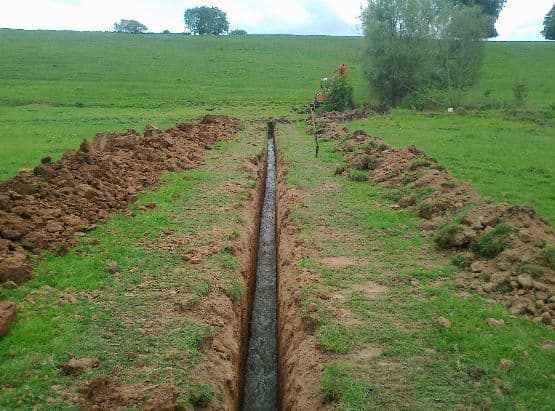Land drainage is a crucial aspect of property management, ensuring the efficient removal of excess water to maintain soil structure, prevent waterlogging, and safeguard infrastructure. Whether you’re a homeowner, farmer, or land developer, understanding the principles and techniques of land drainage is essential for optimizing land productivity and minimizing water-related issues. This comprehensive guide explores the secrets of Land drin, offering insights and strategies for effective water management.
1. Understanding Drainage Principles:
- Gravity Drainage: The most common method of land drainage relies on gravity to convey water away from problem areas. By creating a slope or gradient, water naturally flows downhill, following the path of least resistance.
- Surface and Subsurface Drainage: Surface drainage focuses on removing water from the soil surface through features like ditches, swales, and channels, while subsurface drainage involves the installation of underground systems such as pipes, drains, and tiles to intercept and remove excess water from the root zone.
2. Assessing Drainage Needs:
- Site Evaluation: Conduct a thorough assessment of your property to identify drainage challenges, including areas prone to waterlogging, soil types, topography, and existing drainage infrastructure. Consider factors such as climate, rainfall patterns, and land use to determine the most appropriate drainage solutions.
- Hydrological Analysis: Analyze rainfall data and calculate runoff coefficients to estimate the volume and intensity of surface water runoff. This information helps determine the capacity and design requirements of drainage systems to effectively manage water flow.
3. Implementing Drainage Solutions:
- Grading and Sloping: Modify the land’s surface by grading and sloping to create a natural gradient that directs water away from structures and sensitive areas. Use earth-moving equipment to reshape contours and establish proper drainage patterns.
- Surface Water Management: Implement surface drainage techniques such as ditches, berms, and swales to capture and divert runoff away from problem areas. Incorporate erosion-control measures such as vegetation, mulch, and erosion-control blankets to stabilize soil and prevent erosion.
- Subsurface Drainage Systems: Install subsurface drainage systems, including French drains, tile drains, and curtain drains, to remove excess water from the soil profile. Use perforated pipes surrounded by gravel or aggregate to facilitate water collection and transport to designated outlets.
- Retention and Detention Basins: Construct retention and detention basins to temporarily store and manage stormwater runoff, reducing the risk of flooding and erosion downstream. Design basins with appropriate storage capacity and incorporate vegetation for additional water filtration and habitat enhancement.
4. Maintenance and Monitoring:
- Regular Inspection: Schedule routine inspections of drainage infrastructure to identify potential issues such as clogs, damage, or sediment buildup. Clear debris, vegetation, and obstructions from ditches, pipes, and outlets to ensure unobstructed water flow.
- Seasonal Maintenance: Implement seasonal maintenance practices such as mowing, pruning, and vegetation management to optimize drainage effectiveness and prevent weed and vegetation growth that may impede water flow.
- Monitoring and Adjustment: Monitor water levels, soil moisture, and drainage performance regularly to assess system effectiveness and make necessary adjustments. Utilize monitoring tools such as water level sensors, soil moisture probes, and flow meters to track changes and optimize drainage efficiency.
By unlocking the secrets of land drainage and implementing comprehensive drainage strategies, you can effectively manage water resources, mitigate flood risks, and enhance land productivity. Whether you’re addressing residential, agricultural, or commercial drainage needs, a proactive approach to land drainage is essential for sustainable land management and environmental stewardship.



